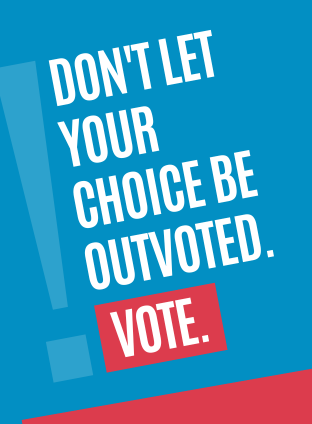The U.S. Supreme Court’s decision on Monday marks a significant moment in the ongoing debate over the Trump administration’s wartime powers. The ruling allows the government to use a 1798 law, the Alien Enemies Act, to deport alleged members of a Venezuelan crime gang. While this outcome is a victory for President Trump, the case raises crucial questions about the balance of power between the executive branch and the judiciary in matters of national security.
What Does the Supreme Court’s Ruling Mean?
The Supreme Court ruling essentially upholds the Trump administration’s ability to deport foreign nationals associated with criminal organisations using wartime powers. In this case, the government sought to deport alleged members of the Venezuelan criminal gang Tren de Aragua, citing the Alien Enemies Act of 1798.
The Act, initially created during the presidency of John Adams, empowers the president to take swift action in cases of war or imminent invasion. This power was used during previous wars such as the World Wars, but it has now resurfaced under Trump, who used it to justify the swift deportation of several alleged gang members with connections to Venezuelan criminal groups.
Key Points of the Decision
Here are the essential takeaways from the ruling:
-
Deportation Power Upheld: The Court ruled that the Trump administration can invoke wartime powers to deport Venezuelan gang members, even without offering a detailed public explanation of the national security concerns.
-
Detainees Have Legal Rights: While the decision upheld the deportation power, it also provided a safeguard for detainees. They now have the right to challenge their deportation before a federal judge in Texas before any removal action is taken.
-
Challenging Summary Removal: The Supreme Court stressed that while the detainees’ deportation was not inherently illegal, they must be notified of their impending removal in a manner that allows them to seek legal recourse.
The Legal Basis: Alien Enemies Act
The Alien Enemies Act is a piece of legislation dating back to 1798, and it grants the U.S. President authority to deport any foreign national deemed a threat to national security, especially in times of war. This law was invoked on the premise that certain Venezuelan nationals, allegedly tied to criminal gangs, could be classified as “alien enemies.”
This wartime power was previously used during wars with France and Germany, but this is the first time it has been applied in such a manner in recent years. The government’s rationale was to protect the nation from gang violence allegedly originating from Venezuelan criminal syndicates. This includes accusations that Tren de Aragua gang members were engaged in actions that could be classified as irregular warfare.
The Court’s Majority Opinion
In the majority opinion, delivered without a signature, the Supreme Court stated that detainees who face removal orders under the Alien Enemies Act are entitled to notice of their deportation. This gives them a reasonable opportunity to challenge the government’s claim in federal court.
The ruling also means that these detainees must be informed in a way that allows them to seek habeas corpus relief—a legal procedure to challenge unlawful detention. This is crucial for those who believe they are wrongly identified as gang members due to tattoos or other superficial markers.
The Dissenting Opinion
The dissent, voiced by Justices Sotomayor, Kagan, Jackson, and Barrett, argued against the Court’s decision. They criticised the Trump administration’s approach, claiming that it posed a direct threat to the rule of law.
Justice Sotomayor argued that the government’s actions were a dangerous overreach and that the Court should not condone what she viewed as an unjustified abuse of power. Justice Jackson also raised concerns about the lack of a full hearing before the case was decided, calling the Court’s intervention “fly-by-night” and dangerous.
Real-Life Implications for Deportation
In March 2025, the Trump administration deported more than 200 Venezuelan nationals to El Salvador. Many of these individuals were alleged gang members with tattoos commonly associated with criminal groups.
What made this case particularly controversial was that the deportations were carried out in a secretive and expedited manner, with many individuals removed without a clear chance to challenge their status in court. This sparked outrage, particularly from civil liberties organisations such as the ACLU, which argued that many of these men were wrongly identified as gang members based on superficial tattoos.
The Role of the Courts
At the centre of the dispute is the question of who gets to decide how to handle sensitive national security operations. The Trump administration argues that such powers should lie firmly in the hands of the President, while critics—especially those within the judiciary—have called for greater oversight to prevent potential abuses of power.
The Supreme Court ruling means that federal judges will still have the authority to review the legal grounds for deportations but will have limited power to block the deportation process itself. This sets an important precedent for how future administrations may act when invoking national security powers.
Conclusion
The Supreme Court’s ruling on Trump’s wartime powers to deport Venezuelan gang members marks a pivotal moment in the ongoing debate about executive power versus judicial oversight. While the decision ultimately upheld the President’s authority to deport individuals under the Alien Enemies Act, it did provide important legal safeguards, ensuring detainees are given notice and the opportunity to challenge their removal before a federal judge.
As debates over national security powers continue to evolve, this ruling serves as a stark reminder of the tensions that can arise between protecting the country and safeguarding individual rights. It also raises fundamental questions about the balance of power in the United States’ legal system, particularly when it comes to the executive’s authority in times of national crisis.
Relevant links for further reading:
Photo credit: NPR


